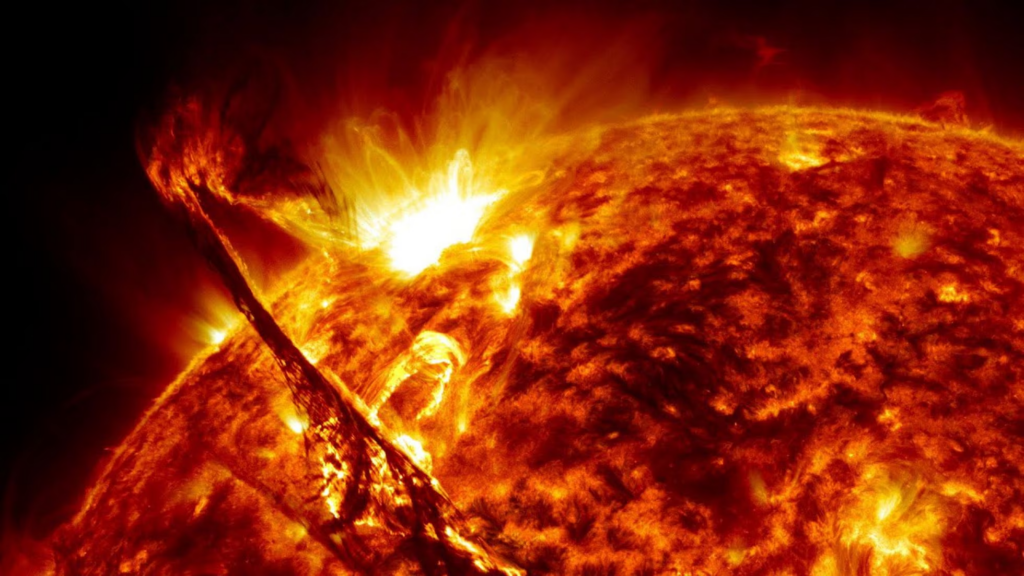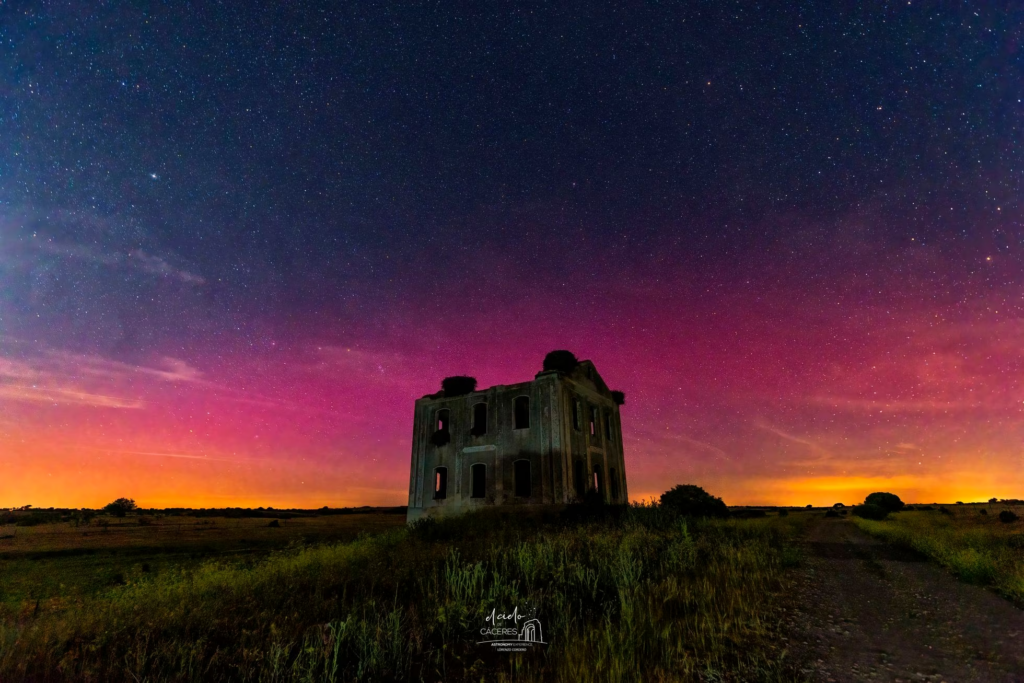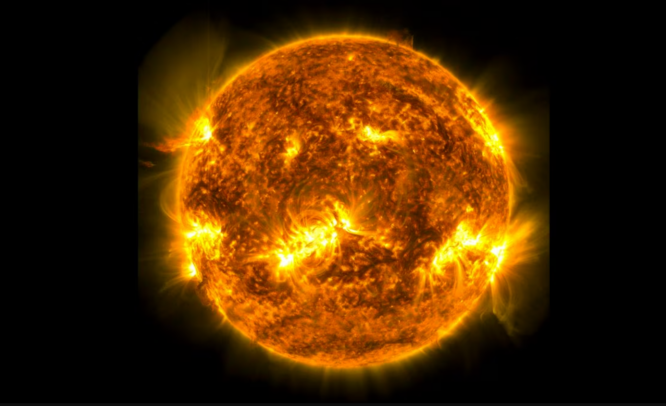On April 23, aurora borealis were spotted at relatively low latitudes near the equator. The stunning display was visible in Texas and Extremadura, Spain, where NASA’s finest shot of the day was taken by astrophotographer Lorenzo Cordero.
“It is due to one of the largest magnetic storms that has happened in recent years, caused by a solar filament,” says Consuelo Cid Tortuero, researcher at the University of Alcalá and scientist at SeNMEs.
The National Center for Atmospheric Research (NCAR) director, physicist Scott W. McIntosh, believes the solar peak’s maximum has advanced a year. McIntosh’s estimate is based on 20 years of solar intensity data from 1750 and his observation of sunspots. According to experts, the peak intensity will occur in late 2023 or early 2024, implying a “termination event.”
The phenomena happens when an 11-year solar cycle abruptly stops, altering the star’s polarity, then begins again with increased intensity. When one solar cycle finishes and the next begins, massive magnetic field collisions can cause plasma tsunamis that charge the Sun’s surface for weeks.
According to predictions from the last solar cycle, geophysicist Joan Miquel Torta verifies we are in an unexpectedly active solar cycle. Torta, Ebro Observatory’s director, compares it to living in a seismic zone: “There may be more activity, but not all of the events are critical.”
A massive solar ejection in 2012 did not reach Earth. Cid says we’re “on the way” to a solar peak, but “the worst part is the cycle’s descent, when there are a lot of filaments in the Sun.” These filaments can discharge solar material into space, which is dangerous if they face Earth. According to the expert, more sunspots signal “more activity and a higher probability of something jumping out.”
Despite McIntosh’s concerns, the Sun’s activities shouldn’t worry the people. If a solar event damages the power infrastructure and water cannot be treated, someone must be held accountable. The scientist responds, “That’s crucial.”
“Events of low probability but very high impact” are how geophysical security specialist Torta describes solar flares at their peak.

Due to satellites and power consumption, our relationship to the galactic environment has evolved substantially in the last 100 years. “These phenomena start to affect technological systems, the infrastructure we have developed,” thus we must pay greater attention to solar flares. Torta explains, “That’s our dependence.”
The system’s vulnerability
The Carrington incident, named after astronomer Richard Carrington, is mentioned by all specialists. An exceptionally intense solar flare in 1859 destroyed the US and UK telegraphic networks while turning night into day in the Caribbean, Hawaii, and the Canary Islands.
Miguel Herraíz Sarachaga, professor emeritus in the Complutense University of Madrid’s Physical Sciences department, recalls a 1989 solar flare in Quebec, Canada, that shut down a hydroelectric plant and left “millions of people without electricity for 12 hours.”
Any system overpowering threatens radio emissions, GPS navigation, and communication satellites. “Geomagnetic storms influence a lot, and in situations of high electric conductivity, they affect the equipment,” Torta explains.
Destroying an electric node might be disastrous. Due to the complexity of replacing the components, Herraíz thinks it would take months. Space meteorology, which examines the physical state of the planetary system, is developing due to our dependency on telecommunication systems, which may be damaged by severe solar occurrences.
Ebro Observatory’s geomagnetism specialist believes that “we don’t need to be dramatic or paranoid, but we should analyze our vulnerabilities.” Miquel says, “Not only does the ejection have to reach Earth, but the magnetic field of the plasma that travels with the solar wind must have a polarity opposite to Earth’s magnetic field, causing a phenomenon called magnetic reconnection.”

Each nation must “know their electrical grid and analyze how dependent it is on its technology,” according to the study. The geophysicist praises society’s “more resilient to climatic phenomena” and technology’s improved transformers and satellites.
Auroras south
Earth is fully dependent on the Sun. In strong eruptions or solar flares, radiation and highly charged particles directly harm our world. Geomagnetic storms in the upper atmosphere are caused by the solar wind, a large quantity of plasma from the Sun.
Space meteorology’s greatest visible manifestation is the aurora borealis, seen from the North and South Poles. However, a severe storm may make auroras visible at lower latitudes, as happened in the Southern US and Europe some weeks ago.
Professor Herraíz uses borealis observations to discuss “the geophysics of Earth’s spacial environment.” Early discovery of space meteorological phenomena allows precautionary actions to reduce harm from severe solar occurrences. “The more science there is, the better information we’ll have, and prevention will be more precise.”
María Teresa del Río Gaztelurrutia, from the Planetary Science team at the University of Basque Country, explains, “The aurora is the most visible manifestation of the magnetic storms that cause mass to come from the Sun and impact the Earth.” The physicist says they’re common and only “massive events” cause issues. Electrons and protons colliding with Earth’s oxygen and nitrogen create vivid purple skies around twilight.
According to Professor Herraíz, the twilight sky’s star show is the “friendly face.” “Which shows that auroras had been observed in our latitudes before, and that these atmospheric phenomena are as old as the world,” Herraíz says. “We can detect them better now.”
The expert says, “What we see is the result of the impact of a coronal mass ejection that has traveled from the Sun to Earth’s magnetosphere, and the interaction of the highly charged particles dragged by the solar wind, which has penetrated our planet’s atmosphere.”
The particles’ light as they lose energy creates auroras, but it also displays atomic-scale physical events. According to the professor, the interaction “makes clear the existence of our atmosphere and the magnetic field of the Earth, and, in a certain sense, it makes it visible.” Usually, “it has no danger in itself.”

